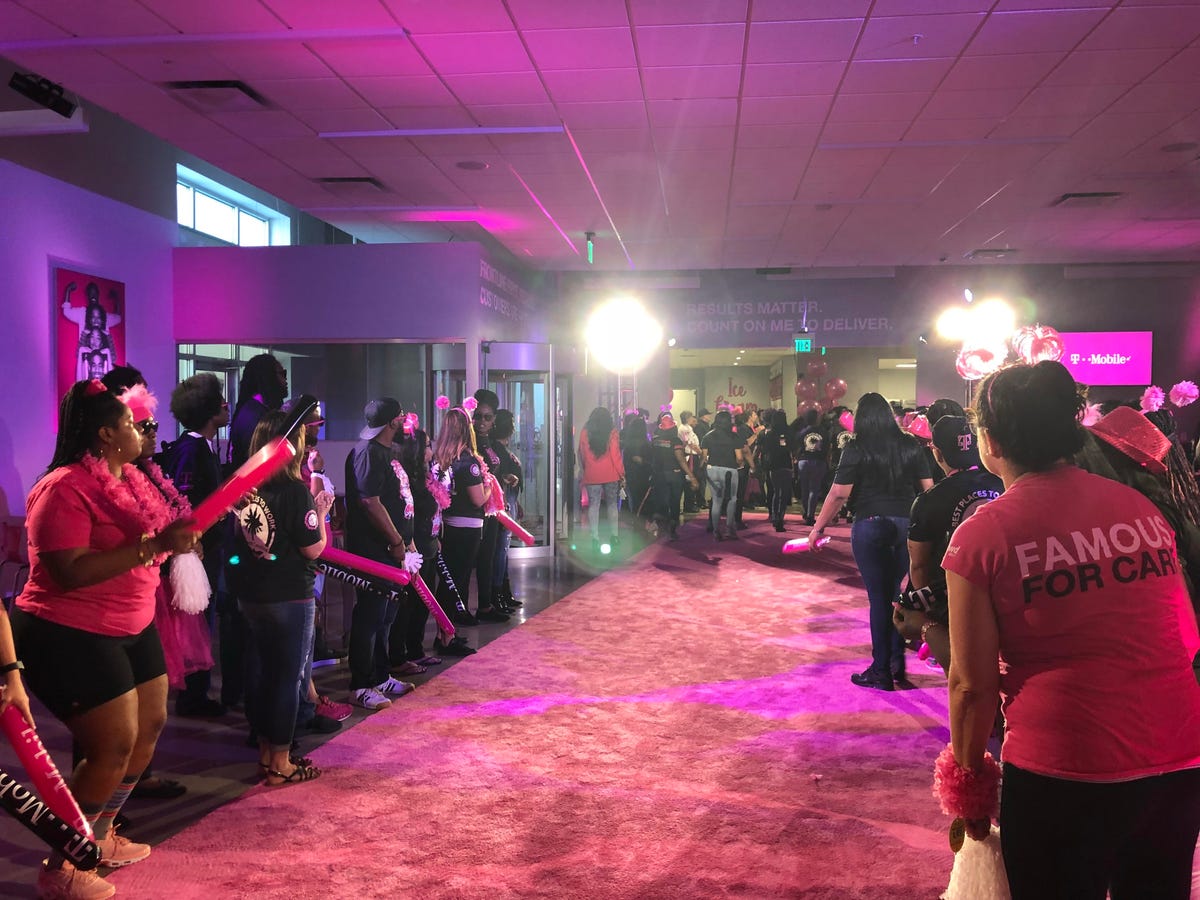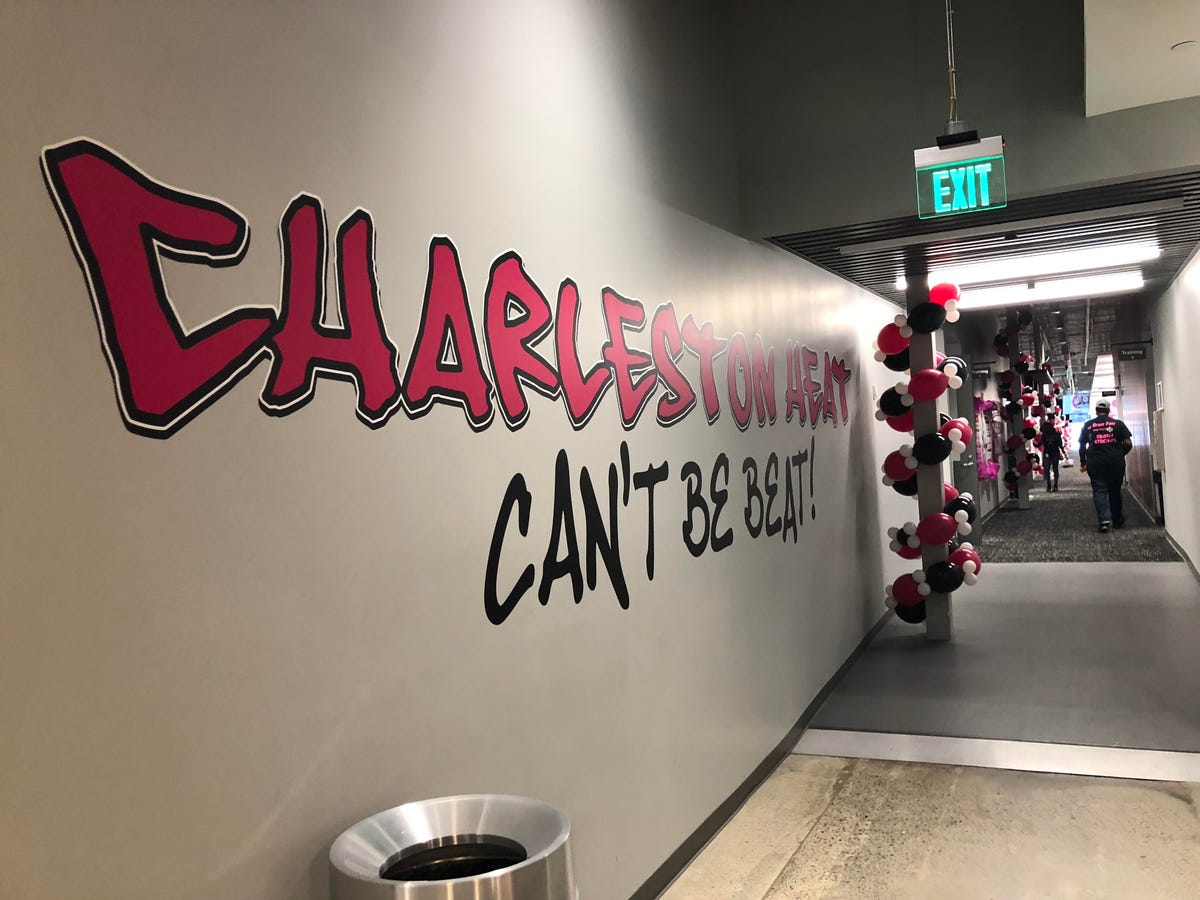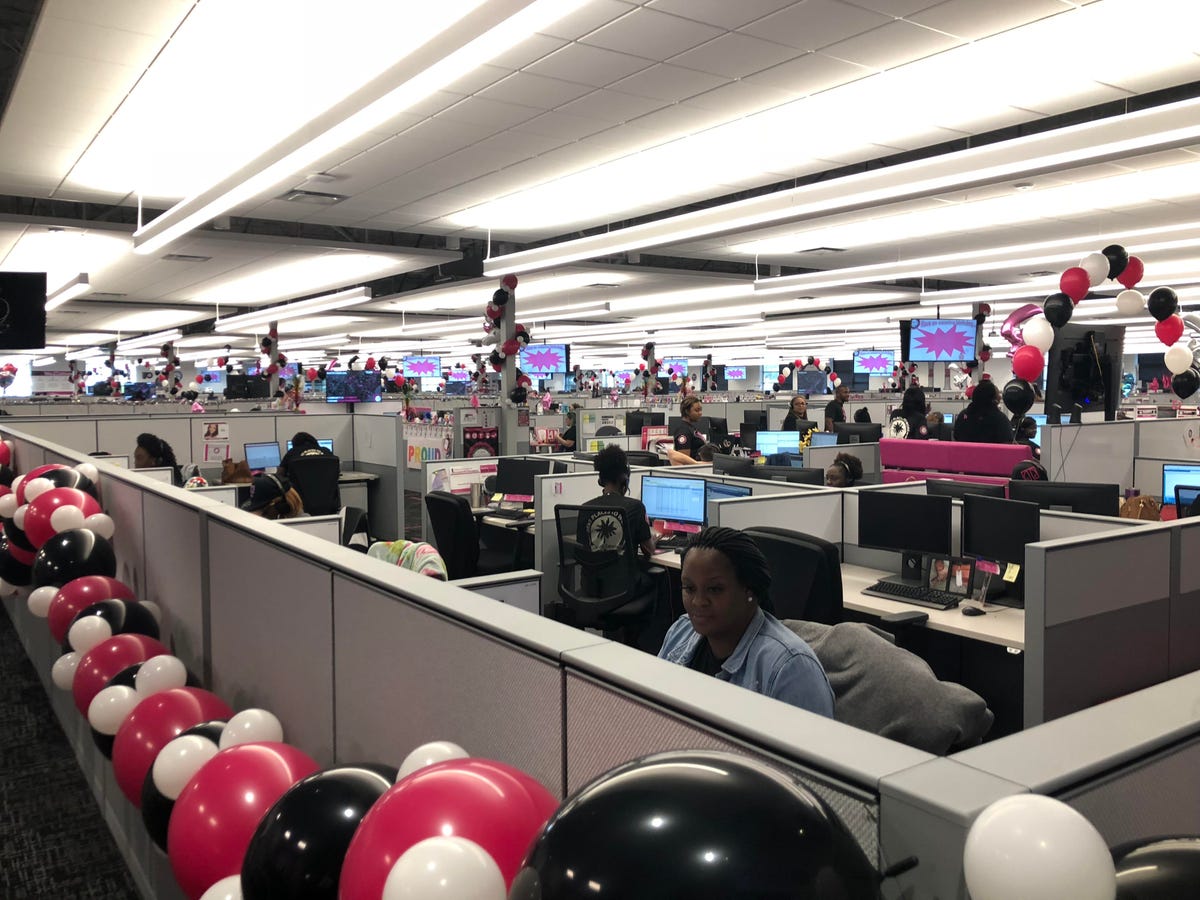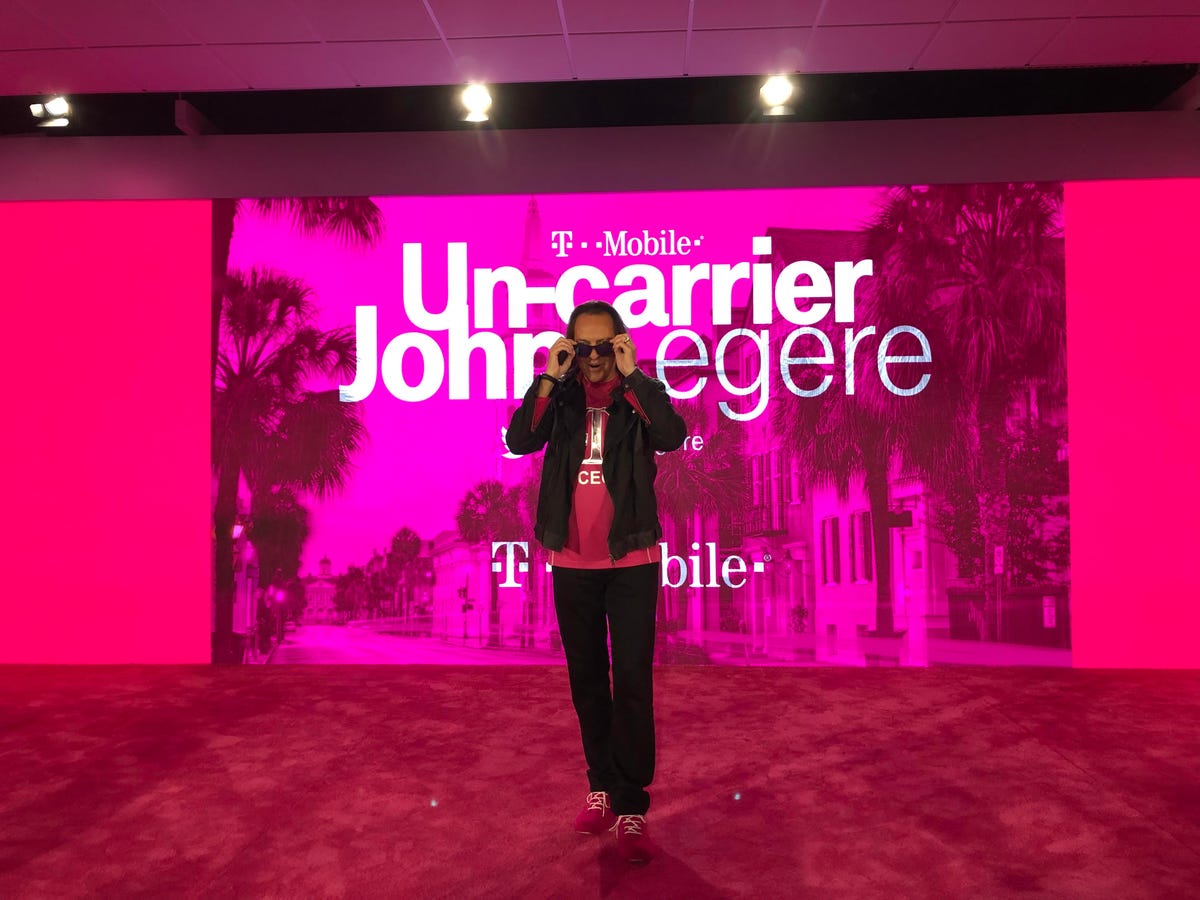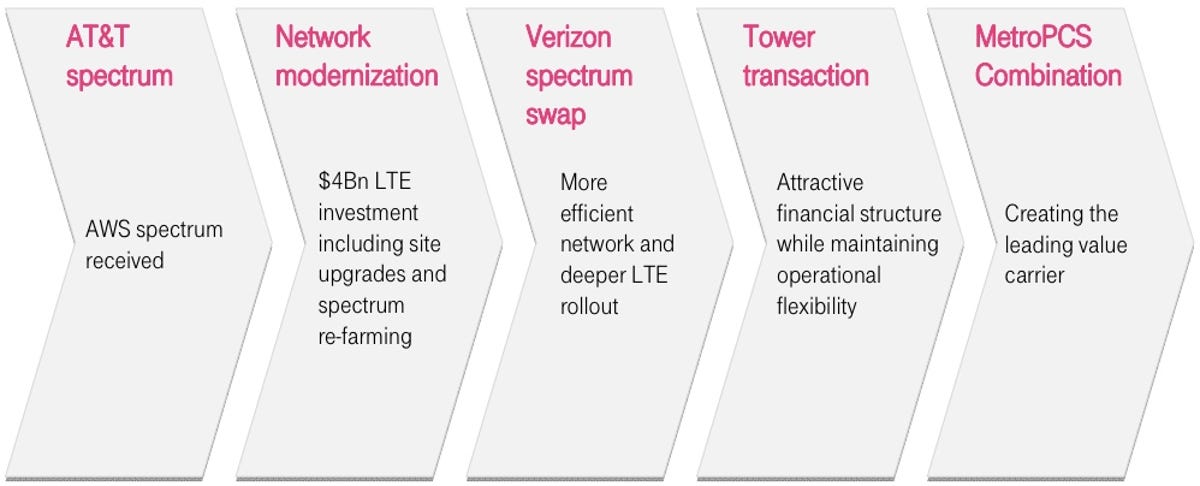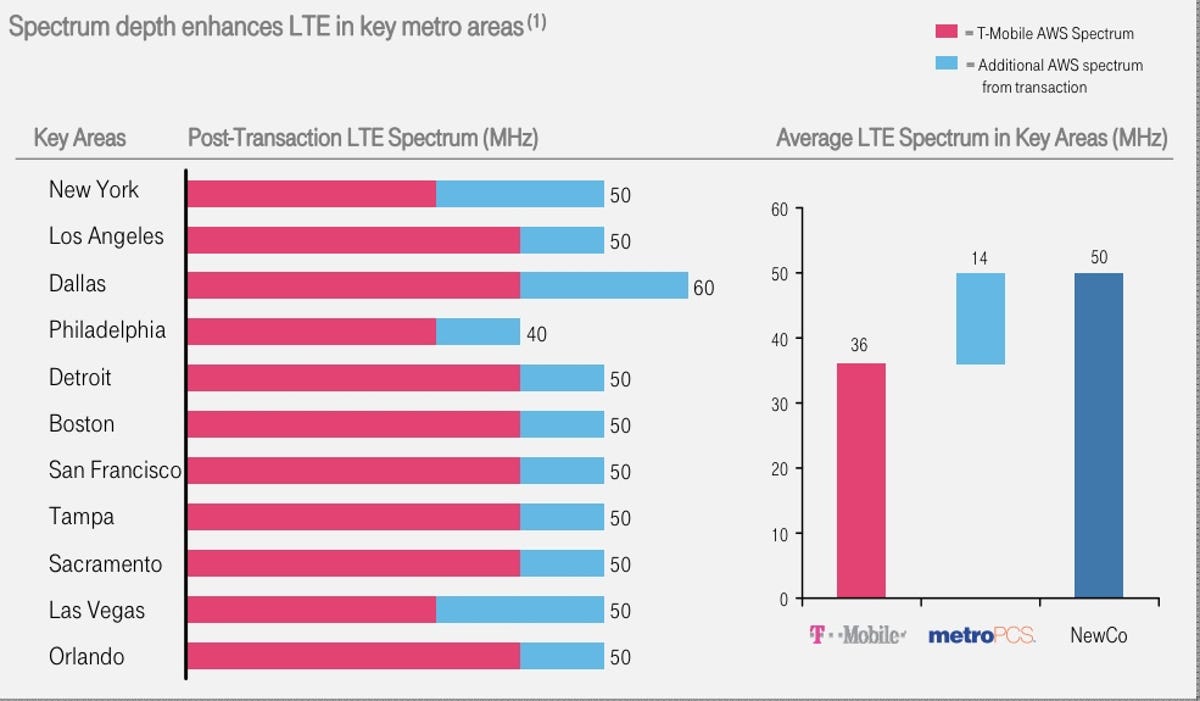John Legere, the rebel telecom executive who pulled T-Mobile from the edge of irrelevance and turned it into a thriving carrier with a cult following, has overseen his last “Un-carrier” event.
On Wednesday, as T-Mobile completed its merger with Sprint, Legere handed the CEO reins to Mike Sievert. Legere will serve on the board until his contract is up in June. The handover came a month earlier than previously announced but makes sense, given the company’s desire to craft a new identity following the close of the deal.
Legere, who became T-Mobile’s chief exec in fall 2012, boasted a colorful vocabulary and employed his quick wit in ways that got under the skin of his rivals. But he was more than talk. Legere and his team fundamentally changed how the industry operated in many ways, often to the benefit of consumers.
“Anybody here from New York? Any of you use AT&T? Any of you who use them, are you happy? Of course not. Their network’s crap,” he said at his first CES conference back in 2013, before adding, “All in good fun, of course.”
Here are the ways that Legere shook up the mobile industry, made bigger rivals Verizon and AT&T sit up and take notice, and helped get us ready for our 5G future.
Killing contracts
Legere’s biggest move was arguably his first. Before his “Un-carrier” events — the company’s name for the occasions when it unveiled new customer perks — became a regular thing, Legere came out swinging in spring 2013 when he eliminated contracts and offered more straightforward and lower monthly rate. At that point, contracts were a standard industry practice. No-contract, prepaid services existed, but there was usually a stigma attached to them because they often catered to consumers who lacked the credit score to qualify for a contract.
Related stories
Eliminating phone subsidies
The other aspect of killing contracts was to remove phone subsidies, or the discount that you received when signing a phone contract. Instead of saving $200 or so on a phone off the bat, you would instead pay for your device in monthly installments. Because the service plan was cheaper than under a contract, once you paid off the phone (usually after two years), your monthly bill would fall significantly.
Rapid phone upgrades
T-Mobile introduced its Jump program a few months after its first Un-carrier event in 2013, which let you upgrade to a new phone multiple times by trading in your existing device. The industry later jumped on the idea of giving consumers more value for their phone trade-ins.
International data
Before T-Mobile came on the scene, browsing the internet while overseas was a costly proposition. But Legere changed that, launching Simple Global, which let consumers exchange text messages while abroad without any fees, and gave them access to low-speed data for simple things like email.
While its competitors didn’t necessarily add free international data to match, they did introduce more aggressive offers for overseas roaming. It also paved the way for plans that included free roaming to Canada and Mexico by several carriers.
Those F-Bombs
Telecom executives are not exactly known for being a rowdy bunch. They wear suits and ties and are generally straitlaced and inoffensive. Former Sprint CEO Dan Hesse served as the face of his company for years through a myriad of classy black-and-white commercials, and presented himself as an even-keeled steward of the business.
Not Legere. He littered his first press conference with F-bombs, and referenced customers hogging bandwidth to stream porn — language that would’ve made any other telecom executive blush.
He kept his hair long and unkempt. Instead of a suit, he wore magenta T-shirts and rocked a custom leather jacket.
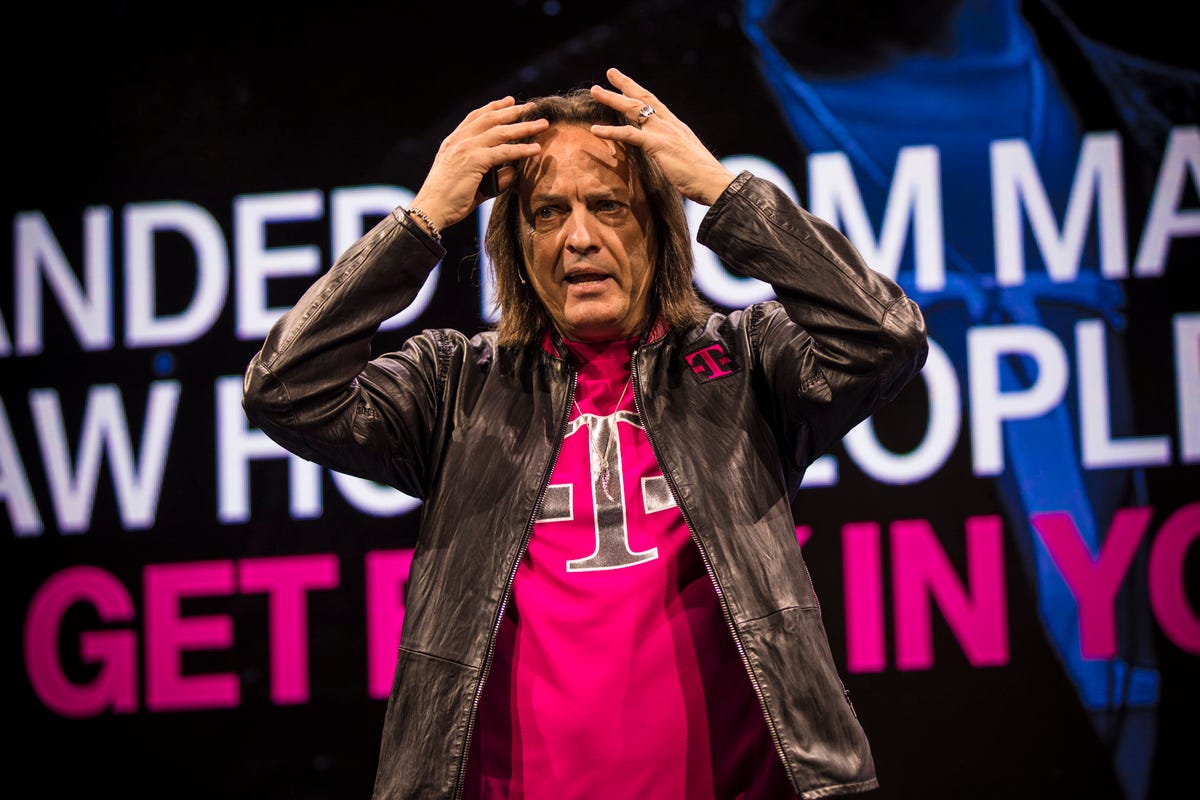

John Legere had a way with words.
James Martin/CNET
Cult of personality
Legere was also one of the first executives to really harness the power of social media. He’s a fixture on Twitter and Instagram, and effectively made use of Stories. For two years, he hosted his own cooking show, Slow Cooker Sunday, on Facebook Live. He even has his own cookbook, and has had guests like Jimmy Fallon on the weekly program.
Back in 2014, he even crashed AT&T’s party at CES — until a young(er) reporter tweeted a picture with Legere and accidentally got him kicked out.
Ran into @JohnLegere at the AT&T party. Yep, he crashed it. And still wearing the pink t-mo shirt. #CES2014 pic.twitter.com/gy9vGTJUEW
— Roger Cheng (@RogerWCheng) January 7, 2014
Sniping the competition
Telecom executives tended to shy away from knocking their competitors, instead preferring to focus on the strengths of their service. Verizon had a brief run in which it knocked AT&T’s iPhone in a holiday ad, banishing it to the land of “misfit toys” because of poor service, although Verizon ended up scrapping that campaign.
T-Mobile went all-in on bashing the competition. Legere regularly called AT&T and Verizon “dumb and dumber” and, in the early days of his tenure, relentlessly bashed Sprint. When Comcast and the other cable giants entered the mobile business, he crapped on them too.
The mudslinging made sense, since T-Mobile fashioned itself as the champion of consumers working to right the industry’s wrongs. But it opened the door to more telecom executives freely taking shots at one another.
An investor call for everyone
T-Mobile also broke the mold with its quarterly earnings conference calls. Those calls are usually reserved for the financial community, with executives offering an update on the state of the business and analysts asking questions.
T-Mobile, however, opens up the call to everyone. The executives, who also appear on a live video stream, take questions not just from analysts and journalists on the call, but also questions from consumers and fans on Twitter.
Sievert, the new CEO, says he’ll continue to run T-Mobile the same way, although it seems pretty unlikely that he’ll be dropping F-bombs.







